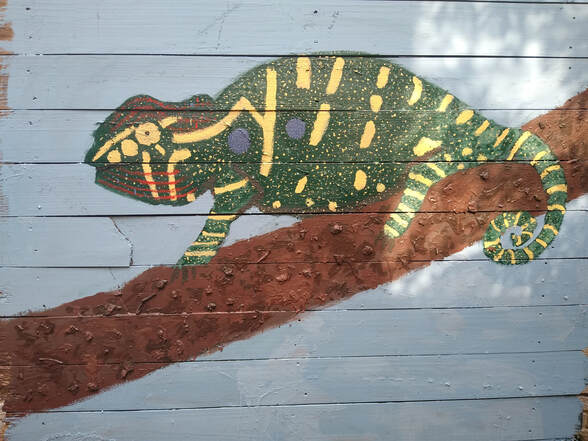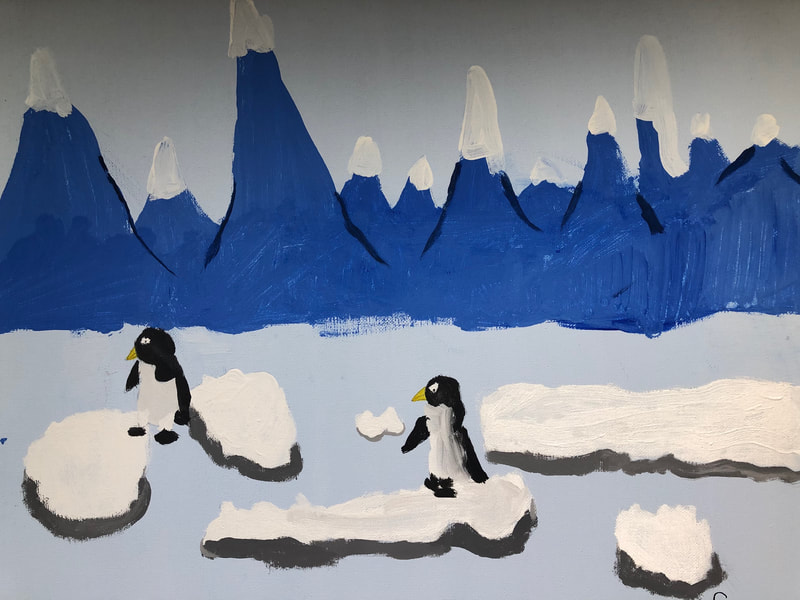In Spotlight: Conversations on Conservation: Part V
|
A single strand of web stretches from the tip of a yellow petal to a nearby leaf; it is the last remnant of an intricate web. Alas! The masterful artist is long gone. Overnight a tiny dewdrop has claimed the high wire where it waits patiently to glisten in the morning sun. The twilight stillness is interrupted briefly by the chirp of a songbird, the first call announcing the rising sun. As the world awakens to first light, the notes of songbirds slowly fill the morning air. Pollen-covered bees are already at work, making their rounds to new blossoms. The scurry of chipmunks under the magnolia tree draws my attention to their game. One darts out to the flowerbed, revealing a new entrance it has just dug to his home. The gentle summer breeze whispers through the tall oak trees reminding us of its cool shade and the respite it brings to a hot summer day.
While we have hunkered down, trying to weather a global pandemic, nature has continued to hum along. Spring has turned into summer. Bare trees have become green again, and baby birds have fledged their nest. And like nature, our young conservationists have not missed a beat and have shown resilience! The Summer Edition is my absolute favorite edition to publish every year. This edition is dedicated to showcasing the vision of our young conservationists, our future leaders of the world. I love receiving their submissions, reading them, and learning from them. I'm delighted to share their unique perspectives on wildlife, their unconditional love for nature, and their well-thought-out solutions to emerging concerns! The theme of this edition beautifully reflects one of the tenets defined in the Native American Code Of Ethics: Respect all of the things that are placed upon this Earth. People, animals, plants, and rocks are all children of the Great Creator Spirit. Honor their place in the chain of life. We are all interconnected. I want to take this opportunity to thank every one of the participants for sharing their thoughts and talents and for raising awareness on important issues related to wildlife conservation. I am so proud of them! If you have any comments or questions for our contributing artists, poets, or writers, please send those to me via email or by using the comment box on the Contact page, and I will forward it to them. |
ART
|
"A flower in our garden"
Lucifer Crocosmia: Attracts butterflies and hummingbirds. Artist: Grayson M Age: 11 Atlanta, GA USA " I like the way this plant looks in our garden" ~ Grayson. M |
"Penguins"
Artist: Sara K Age: 16 Atlanta, GA USA "Penguins have always been my favorite animal, and it's one of my dreams to be able to see them up-close in person in their natural habitat." ~ Sara K Read Sara's article from 2015 |

"Furcifer minor"
Lesser Chameleon
Status: Endangered
Range: Endemic to Madagascar
Artist: Ingrid C and Bridget. C
Age: 14 & 8
Atlanta, GA USA
"We painted a chameleon because they are such amazing and unique creatures. And the reason we chose to paint the Lesser Chameleon is because they are found only in Madagascar and they are listed as endangered"
~ Ingrid and Bridget
POETRY
POETRY
Misunderstood
By: Roweina Z
Age: 11
Houston, TX USA
By: Roweina Z
Age: 11
Houston, TX USA
Sharks, Pitbulls, Snakes, Crocodiles, Bats
Do they all put a shiver through your back?
Like a frosty winter night and an eerie glow.
These animals don't mean any harm, you know. Read more
Do they all put a shiver through your back?
Like a frosty winter night and an eerie glow.
These animals don't mean any harm, you know. Read more
Baby Praying Mantises
(A series of haikus)
By: Emily H
Age: 13
Atlanta, GA USA
(A series of haikus)
By: Emily H
Age: 13
Atlanta, GA USA
A note from Emily: "I have written a series of haikus* about baby praying mantises that we found emerging from an egg sac in our backyard. We got a few pictures of the babies. The picture of the big praying mantis was taken a while ago, on a different occasion."
Editor's note: *Haiku or Haikus is a style of Japanese poetry comprising of only three lines. The poem has 17 syllables divided into three lines of 5, 7, and 5 syllables. Typically, the subject matter in a haiku is nature.
Editor's note: *Haiku or Haikus is a style of Japanese poetry comprising of only three lines. The poem has 17 syllables divided into three lines of 5, 7, and 5 syllables. Typically, the subject matter in a haiku is nature.
Small like ants they march.
Tiny legs and swaying dance
Praying mantis young.
Tiny legs and swaying dance
Praying mantis young.
Light in the dark
By: Ingrid C
Age: 14
Atlanta, GA USA
By: Ingrid C
Age: 14
Atlanta, GA USA
A chirp
Then a shriek
A rustle of wings
A burst of color
As she takes flight
Across the dark sky
A bright beacon
In the somber night
Then a shriek
A rustle of wings
A burst of color
As she takes flight
Across the dark sky
A bright beacon
In the somber night
SHORT ESSAY
SHORT ESSAY
COVID-19: The Unseen Effect on Wildlife
By: Nandana A
Age: 14
Atlanta, GA USA
By: Nandana A
Age: 14
Atlanta, GA USA
Wild animals are defined as animals that have not been domesticated. They live in the savannas of Africa, the rainforests of South America, the jungles of Asia, and more. But our insatiable desire to expand has meant that we have trespassed upon these animals more often than not. In the span of 44 years, 60% of the vertebrates on the earth have been wiped out because of human activity. Deforestation, agriculture, and urbanization have left them with little to no access to food, shelter, and water. Approximately 30,000 species die annually due to habitat loss; this is about three species per hour. It’s estimated that 80% of the decline in species diversity is due to this problem, and the current rate of destruction is 160,000 kilometers2.
These facts may seem sobering, but animals still have a few tricks up their sleeve (or paw). Read more
These facts may seem sobering, but animals still have a few tricks up their sleeve (or paw). Read more
52-Hertz
By: Rania Z
Age: 15
Houston, TX USA
By: Rania Z
Age: 15
Houston, TX USA
In the depths of the Pacific Ocean is a whale who speaks the language of one. Its unique call is at a higher frequency than that of its counterparts. It is unimaginable to find oneself in such a situation, alone, drifting through the dark, muted waters, looking for someone who would understand you. And yet many sympathize with this whale, a lonely individual traveling solo, with essentially no way to communicate with its companions.
The 52-hertz whale, at least to me, represents much more than a scientific anomaly. In a society where individualism set us apart, we feel something akin to this whale, where we are also on our own journey. Read more
The 52-hertz whale, at least to me, represents much more than a scientific anomaly. In a society where individualism set us apart, we feel something akin to this whale, where we are also on our own journey. Read more
Jelly Fish
By: Tanya S
Age: 15
Hyderabad, India
By: Tanya S
Age: 15
Hyderabad, India
When approaching the idea of invasive species, one would think of something that is usually destructive and possibly dangerous. Jellyfish fit that criteria perfectly. For years jellyfish have been disrupting their ecological environment. Jellyfish are composed of an elementary nervous system, an epidermis, and the most basic intestinal organs, furthermore, they are over 95% water-based. One of their few neuro-capabilities is their sensitivity to light which allows them to drift deeper in the sea when faced with bright afternoon sun. They play an important role in their habitat as they are carnivorous. They feed on zooplankton, other jellyfish, and in some cases the eggs and larvae of other fish.
Jellyfish occupy almost every ocean in the world, as they drift with currents and sometimes gather in estuaries and bays. Jellyfish in the eyes of science are extremely complex creatures despite their simple composition, due to their Read more
Jellyfish occupy almost every ocean in the world, as they drift with currents and sometimes gather in estuaries and bays. Jellyfish in the eyes of science are extremely complex creatures despite their simple composition, due to their Read more
If you are an aspiring conservationist and would like to participate in next year's Summer Edition please get in touch with me via the contact page.

